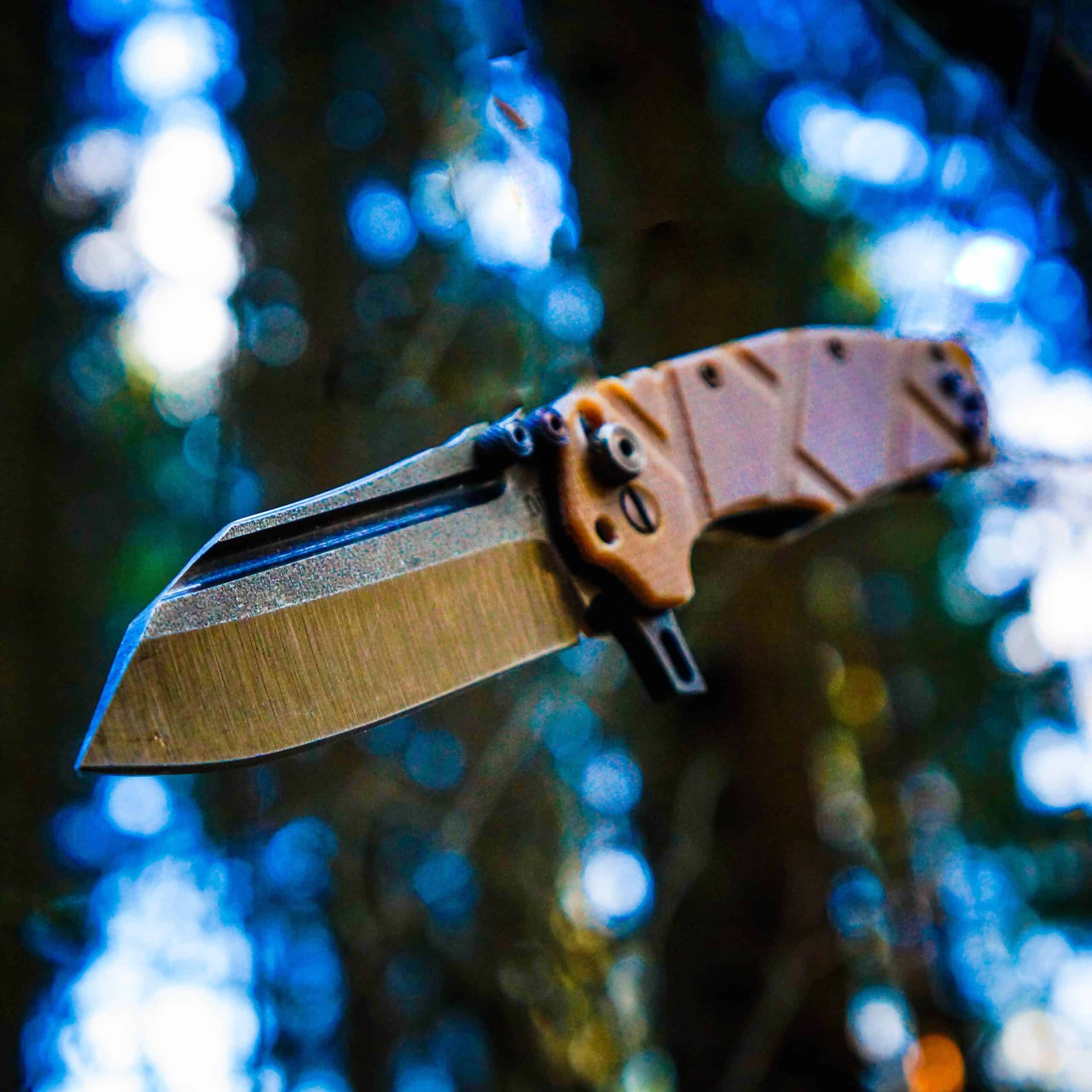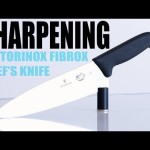
Introduction to Knife Components
Knife components are essential for the performance and effectiveness of a knife. This includes components such as the blade, handle, bolster, guard, and sheath among others. Understanding the significance and purpose of each component will help knife owners better understand why knives are designed with each of these parts.
The blade is considered to be the heart of any knife. Blades can vary in length, shape, material, and size. Generally speaking, blades should give an even balance between durability and flexibility depending on their use cases. Blades also come in a variety of finishes to provide enhanced protection from corrosion or more aesthetic appeal.
Handle materials on knives typically vary depending on their intended use. Handle Oomponents may include wood scales, plastic items, micarta, G-10 laminates, aluminium milled designs and more. Handles can also feature different textures or patterns to allow for stronger grip strength when using a knife more accurately
The bolster often acts as a “buffer” between the handle and blade providing support during times when force is applied to the blade by gripping it by its handle while working with it or grabbing it while using it function efficiently
Guards protect users from injury when using a knife vigorously with one hand due to the potential for slippage toward the blade causing harm if no guard was present The designs are typically found on fixed-blade knives where smooth grips make slipping less likely but not impossible
Finally, there is the sheath which can come in many shapes sizes styles featuring clips straps holes loops mounts etc all of which provides secure carry options for its owner Many sheaths also have secondary tools attached such as cleaning kits fish scalers sharpening rods gut hooks or other attachments that enhance versatility
Types of Knife Components
Blade – The blade is the main component of a knife and makes up the cutting edge. Blades come in various shapes, sizes, and materials, each offering a unique set of benefits. Common knife blade shapes include drop point, clip point, spear point, tanto, and trailing point . The material of the blade is usually made from steel or stainless steel alloy , plus other exotic materials such as titanium and damascus steel.
Handle – The handle provides grip for control when using the knife and is usually made from wood, synthetic materials (polymers) or metal. Different handles come with different features to aid in grip comfort as well as ensuring maximum retention and sturdiness when operating. Additionally, some handles are designed to be ergonomic with deformable textures that adjust to your grip based on pressure applied.
Bolster/Guard – Many knives have an additional part at the top near where the handle meets the blade known as a bolster or guard. This component adds weight to help maintain balance and offer protection so you don’t accidentally cut yourself while using it. Depending on the style of knife these guards can also come integrated with a lanyard hole so you can attach a rope or cord.
Spine & Ricasso – The spine is located on the opposite side of the blade’s cutting edge while ricassos are found just behind them both near where they meet with one another between the tang’s rear border line & grinds beginning area of a standard full flat grind etc). These components allow for additional stability during slicing motions as well as designed to make sharpening easier when needed due to their harder composition compared to other parts on any given kitchen / belt knives edge .
Tang – The tang is the portion of metal which extends into the handle from its base and may be exposed partially from one end or both ends electronically . There are two types of tang: full tangs which extend through all parts of your handle for greater strength; partial tangs which run about two-thirds into it providing less extreme durability but more flexibility in usage areas like game field activities
Handle Materials
Handle materials can come in many different varieties, such as wood, metal, rubber, plastic, and even fiberglass. Each of these materials has its own set of pros and cons when it comes to knives. Wood is the most traditional material for knife handles because it provides a natural aesthetic, is cheap to produce and often feels comfortable in the hand. However, wood is generally not durable enough for outdoor activities or hard use tasks like batoning wood. Metal handles are more rugged than wood and offer greater protection from impacts; however they also can feel cold when held and may be uncomfortable after prolonged exposure to water or sweat. Rubber handle grips offer excellent levels of grip while still providing comfort with their textured surface. Plastic handles are commonplace on many budget level knives and provide lightweight and strong construction without some of the risks that occur with more expensive materials. Fiberglass handle slabs offer unparalleled strength and are often used in specialized task-focused knives like those made for bushcrafting or adventure sports. Depending on your needs, there is likely a handle material that fits your requirements exactly!
Blade Materials
The blade is one of the most important components of a knife because it is responsible for making clean cuts. Depending on the usage and desired outcome, different materials work better than others.
There are two main types of material used to create a blade: carbon steel and stainless steel. Carbon steel knives are usually held to a high standard due to their razor-sharp edges, hard and durable construction, as well as ability to stay sharp despite heavy use. However, carbon blades do require more maintenance and should be hardened correctly in order to maintain a superior edge performance.
Stainless steel blades are more easily maintained since they resist corrosion better than carbon steel and require less regular oiling or cleaning. Additionally, they tend to be cheaper than their carbon counterparts. On the downside, these blades can become dull much faster when used regularly or exposed to abrasive materials. The strength of stainless steel also means that sharpening becomes more difficult and usually requires specialized equipment.
In summary, when selecting a knife you should assess your needs according to its intended use and decide which type of blade material is best for you: either stainless or carbon steel blade depending on whether you prioritize cost savings or toughness/edge retention.
Blade Shapes
One of the most important components of a knife is its blade shape. Each blade shape has an impact on how the knife will perform for different tasks. Some of the most common shapes are drop point, clip point, spear point, tanto, and hawkbill.
Drop point blades are incredibly popular for their versatility as they can be used in just about any situation. These blades feature a convex curve from the spine to the tip which makes them strong without compromising sharpness or control.
Clip point blades are another popular choice because of their thin tip and long cutting surface. This allows them to focus their cutting power into a small area, making them perfect for fine-detail work such as carving or making precise cuts like peeling vegetables.
Spear point blades feature almost symmetrical curves along each side of the blade up to the point. These provide more lateral strength than other options, making these ideal for use as thrusting knives or utility knives.
Tanto blades have a unique design that features an angled edge combined with a reinforced penetrating tip. This makes them effective at slicing through tough materials such as leather and plastic while also providing high durability when conducting stabbing motions.
Hawkbill blades are curved along one side of the blade that creates a hook-like structure near its tip. This structure is great for snagging objects or finishing off detailed cuts without ruining delicate material thanks to its razor-sharp edges and inward pointing angle which prevents it from slipping away too easily from its target surface.
Knife Locking Mechanisms
Knife locking mechanisms are an important feature when it comes to knives because they ensure the blade is secured in place and reduces the risk of accidental deployment. The most common types are liner locks, frame locks, back locks, mid-locks and switch blades. Each type has its advantages and disadvantages, which makes them better suited in certain situations.
Liner locks are one of the most popular locking mechanisms as they are easy to engage yet secure when closed with a strong spring that keeps the blade in place. However, since it takes up relatively little space this mechanism is best suited for folding pocket knives rather than larger ones as it may be too weak to handle large amounts of pressure.
Frame locks are similar to liner locks but are slightly more advanced as they rely on two liners fitted into the frame of the knife to keep the blade locked in place while also allowing for a smooth one-handed opening. This type of lock is often found on expensive tactical folding knives but due to its complexity they can be difficult and costly to replace should something go wrong.
Back locks use an additional bar behind the tang of the knife which must first be pressed before unlocking and closing the knife again. Although this adds an extra layer of security it also means that closing has to be done cautiously for safety reasons.
Mid-locks work by combining elements from both liner and back locks with a protruding latch behind the tang that can only be unlocked upon disengaging a lock inside the handle itself before further pressing down upon the latch bayonet-style at a certain angle so it releases without jamming or bucking. Because of their complex design they do require more maintenance though this is easily outweighed by their increased safety level making them well-suited for self-defense purposes amongst others. Moreover given their design construction upgrade kits are available should something go wrong making them easy enough to fix or customize for specific purposes over time.
Switch blades use electricity or springs instead of traditional buttons or levers guaranteeing very fast opening times; making them very popular among collectors and outdoorsmen alike who need blades capable still remain serious puncture hazards when not taken proper care around children or other vulnerable people so caution must still always be observed when handling these knives
Sheaths and Accessories
Common knife sheaths include leather, plastic, and kydex. Leather sheaths offer the most protection to the knife, helping protect it from scratches and dulling of the blade due to wear. Moreover, many prefer their classic aesthetic look as well. Plastic sheaths are lightweight and tend to protect knives fairly well too; however, they can also crack or wear down easier than other options. Lastly, kydex is a special kind of thermoplastic which can be molded specifically for a certain knife; while not as aesthetically pleasing as leather sheaths, they provide a lot of durability without adding any extra weight to the knife.
In addition to those more well-known components to typical knives, there are several other accessories available that can improve a knife’s usage. These includes things like sharpening stones used to sharpen and hone blades quickly and easily after each use; scales made of durable materials like G10 or carbon fiber which increase grip on the handle; lanyards which make it easier retrievability after being stored away in bushes or trees; kydex belt loops (or pockets) providing an even simpler way to carry your knife around at all times with you; bolster guards which prevent accidental contact with the blade when handling the knife in tight places; pocket clips for secure yet quick access in the pocket; and much more!
Maintenance
Knives are an essential item in any kitchen and require proper maintenance to ensure its longevity. Proper maintenance involves cleaning your knife after each use to remove food residue, followed by a light coating of cooking oil or mineral oil on the blade. It’s also important to clean the handle of the knife to prevent bacteria buildup. Additionally, regular sharpening of your knife is necessary as it helps keep the edge performing at optimum levels. A whetstone or a honing rod can be used for sharpening your knife, and it should be done regularly so that you’re able to maintain accuracy and precision with each cut. Lastly, make sure that the parts of your knife are in good condition; for example, check for loose rivets or worn handles. Taking these steps to properly maintain your knife will help ensure its optimal performance and extended lifetime use.
Conclusion
When purchasing a knife, it’s important to focus on the quality of its components. As a piece of cutting and slicing equipment, the knife should be constructed with durable, high-end materials that provide the necessary strength and sharpeness. Furthermore, ongoing maintenance is essential in order to keep the knife in good condition and perform its intended purpose. This may involve regular sharpening or honing, as well as being sure to store knives properly in order to avoid damage. Knife components are just as important as proper care and maintenance when it comes to ensuring your knife lasts for years to come.















